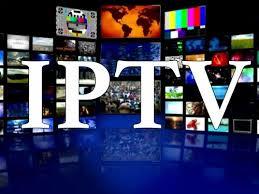In the rapidly evolving landscape of digital media, 4K streaming has emerged as a prominent feature touted by service providers and device manufacturers alike. As consumers are increasingly confronted with this high-resolution option, a critical question arises: is 4K streaming a necessary advancement in viewing technology, or merely a marketing gimmick designed to drive sales? This article delves into the intricacies of 4K streaming, examining its technical benefits, the demands it places on infrastructure, and its actual impact on viewer experience. By analyzing these factors, we aim to provide a comprehensive understanding of whether 4K streaming is a genuine necessity or a cleverly packaged trend.
Evaluating the Technical Benefits of 4K Streaming
When considering the shift to 4K streaming, it’s essential to weigh the technical advantages that come with this higher resolution format. 4K streaming offers four times the pixels compared to 1080p, which results in sharper and more detailed images. This is particularly beneficial for larger screens where the difference in resolution is more noticeable. With enhanced clarity, viewers experience a more immersive and lifelike picture quality, making it ideal for nature documentaries, action-packed films, and visually stunning series.
Beyond the obvious improvement in image quality, 4K streaming also supports High Dynamic Range (HDR), which enhances the contrast and color range. This means deeper blacks, brighter whites, and a more extensive array of colors, resulting in a more vibrant viewing experience. Additionally, 4K content often comes with improved sound formats like Dolby Atmos, providing a more immersive audio experience. However, to fully leverage these benefits, viewers need compatible hardware and a stable, high-speed internet connection, which might not be accessible to everyone.
- Sharper image quality with more detail
- Enhanced colors and contrast with HDR
- Potential for improved audio with advanced sound formats
Understanding Consumer Perception and Market Trends
In the rapidly evolving landscape of digital media, the leap from HD to 4K streaming is often debated. To grasp its impact, we must delve into consumer perception and the underlying market trends driving this shift. Consumer perception plays a pivotal role in shaping demand. Many consumers are swayed by the allure of superior image quality and enhanced viewing experiences. However, others view 4K as an unnecessary upgrade, especially if their current devices do not support such high resolutions. This division is reflected in the market, where streaming services and device manufacturers emphasize 4K capabilities as a differentiator.
- Technological Advancements: Rapid improvements in display technology make 4K more accessible.
- Content Availability: Increasing volumes of 4K content cater to the tech-savvy consumer.
- Bandwidth Considerations: High-speed internet is crucial for seamless 4K streaming, influencing its adoption.
- Cost Implications: The price of 4K-compatible devices continues to decline, encouraging wider adoption.
Market trends reveal a push towards 4K as a standard, yet adoption rates vary across demographics. While younger audiences with access to high-speed internet may embrace 4K, others may remain content with HD, perceiving it as a more cost-effective choice. Understanding these nuances helps companies tailor their offerings, ensuring they meet the diverse needs of their audience.
Analyzing Cost Implications and Accessibility Issues
When it comes to 4K streaming, both cost implications and accessibility issues are pivotal factors to consider. On the financial side, the shift to 4K often demands higher subscription fees. Platforms offering 4K content typically charge a premium, reflecting the increased costs associated with higher resolution streaming. Additionally, users may face expenses related to upgrading their hardware, such as purchasing a 4K-capable television or a compatible streaming device. These costs can accumulate, making 4K streaming a potentially pricey endeavor.
Accessibility presents another layer of complexity. Internet speed requirements for 4K streaming are significantly higher than those for standard HD. Users often need at least a 25 Mbps connection to enjoy uninterrupted 4K content, which can be a barrier in areas with limited broadband infrastructure. Moreover, data usage is considerably greater, posing challenges for those with capped internet plans. Consequently, while 4K streaming offers superior visual quality, its feasibility largely depends on the user’s financial capacity and internet infrastructure, raising questions about its necessity versus its appeal as a marketing strategy.

Recommendations for Making Informed Streaming Choices
When deciding whether to embrace 4K streaming, consider several key factors to make an informed choice. Evaluate your viewing habits: If your primary content consumption involves sports, nature documentaries, or high-action films, the enhanced resolution of 4K might provide a more immersive experience. Conversely, if your interests lie in classic films or sitcoms, the benefits may be less pronounced.
- Device Compatibility: Ensure your TV or streaming device supports 4K resolution. Without compatible hardware, investing in 4K content could be futile.
- Internet Speed: A stable connection of at least 25 Mbps is typically recommended for 4K streaming. Check your bandwidth to avoid buffering issues.
- Content Availability: Verify if your preferred streaming platforms offer a substantial library of 4K content, as options can vary widely.
Ultimately, weigh these considerations against your budget and priorities. A pragmatic approach will guide you in deciding if the leap to 4K is truly warranted or simply a marketing allure.



